用 TensorFlow 在 Transformers 上生成字幕的注意机制的实现
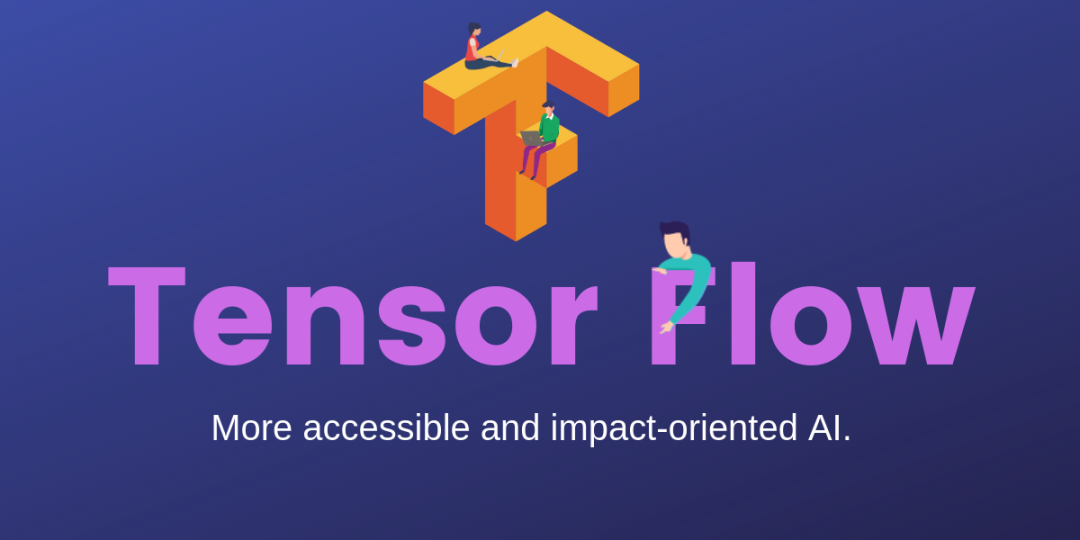
了解最先进的变压器模型。 了解我们如何使用Tensorflow在已经看到的图像字幕问题上实现变形金刚 比较《变形金刚》与注意力模型的结果。
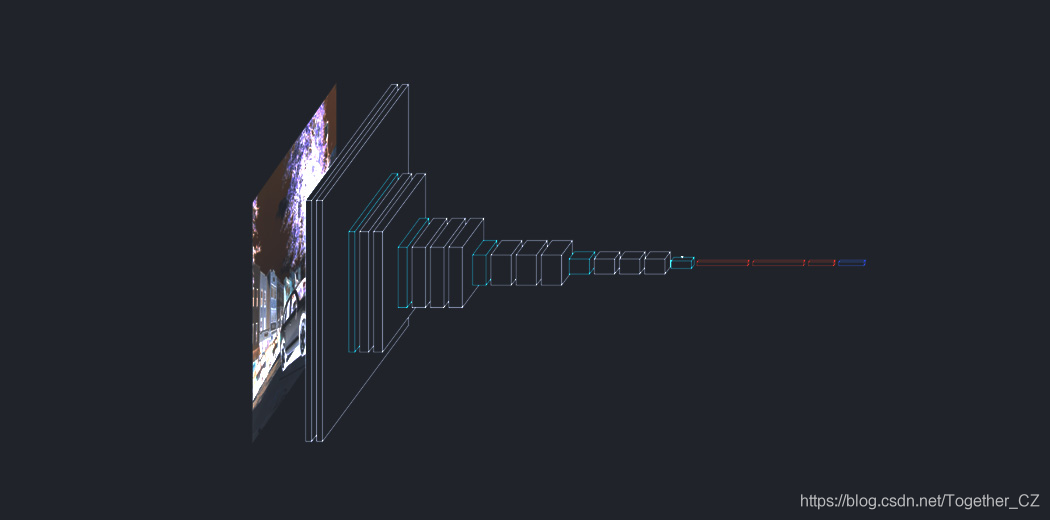
Python编程 Tensorflow和Keras RNN和LSTM 转移学习 编码器和解码器架构 深度学习的要点–注意序列到序列建模
https://www.analyticsvidhya.com/blog/2020/11/attention-mechanism-for-caption-generation/
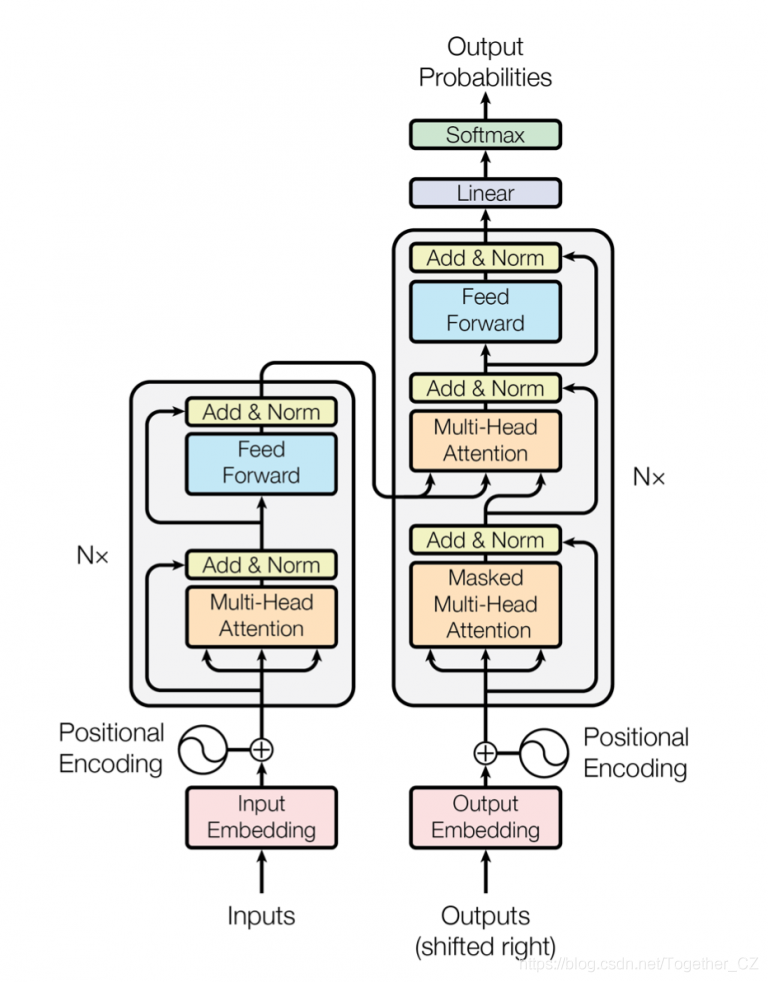
import string
import numpy as np
import pandas as pd
from numpy import array
from PIL import Image
import pickle
import matplotlib.pyplot as plt
import sys, time, os, warnings
warnings.filterwarnings("ignore")
import re
import keras
import tensorflow as tf
from tqdm import tqdm
from nltk.translate.bleu_score import sentence_bleu
from keras.preprocessing.sequence import pad_sequences
from keras.utils import to_categorical
from keras.utils import plot_model
from keras.models import Model
from keras.layers import Input
from keras.layers import Dense, BatchNormalization
from keras.layers import LSTM
from keras.layers import Embedding
from keras.layers import Dropout
from keras.layers.merge import add
from keras.callbacks import ModelCheckpoint
from keras.preprocessing.image import load_img, img_to_array
from keras.preprocessing.text import Tokenizer
from sklearn.utils import shuffle
from sklearn.model_selection import train_test_split
image_path = "/content/gdrive/My Drive/FLICKR8K/Flicker8k_Dataset"
dir_Flickr_text = "/content/gdrive/My Drive/FLICKR8K/Flickr8k_text/Flickr8k.token.txt"
jpgs = os.listdir(image_path)
print("Total Images in Dataset = {}".format(len(jpgs)))

file = open(dir_Flickr_text,'r')
text = file.read()
file.close()
datatxt = []
for line in text.split('\n'):
col = line.split('\t')
if len(col) == 1:
continue
w = col[0].split("#")
datatxt.append(w + [col[1].lower()])
data = pd.DataFrame(datatxt,columns=["filename","index","caption"])
data = data.reindex(columns =['index','filename','caption'])
data = data[data.filename != '2258277193_586949ec62.jpg.1']
uni_filenames = np.unique(data.filename.values)
data.head()

npic = 5
npix = 224
target_size = (npix,npix,3)
count = 1
fig = plt.figure(figsize=(10,20))
for jpgfnm in uni_filenames[10:14]:
filename = image_path + '/' + jpgfnm
captions = list(data["caption"].loc[data["filename"]==jpgfnm].values)
image_load = load_img(filename, target_size=target_size)
ax = fig.add_subplot(npic,2,count,xticks=[],yticks=[])
ax.imshow(image_load)
count += 1
ax = fig.add_subplot(npic,2,count)
plt.axis('off')
ax.plot()
ax.set_xlim(0,1)
ax.set_ylim(0,len(captions))
for i, caption in enumerate(captions):
ax.text(0,i,caption,fontsize=20)
count += 1
plt.show()
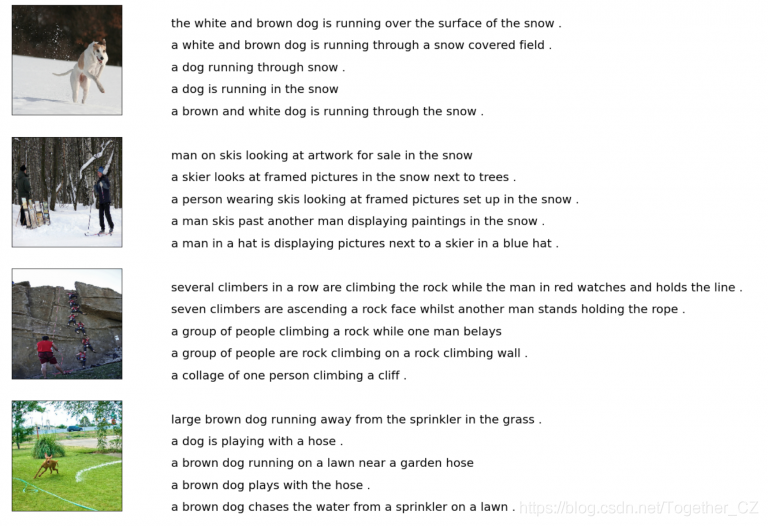
vocabulary = []
for txt in data.caption.values:
vocabulary.extend(txt.split())
print('Vocabulary Size: %d' % len(set(vocabulary)))

def remove_punctuation(text_original):
text_no_punctuation = text_original.translate(string.punctuation)
return(text_no_punctuation)
def remove_single_character(text):
text_len_more_than1 = ""
for word in text.split():
if len(word) > 1:
text_len_more_than1 += " " + word
return(text_len_more_than1)
def remove_numeric(text):
text_no_numeric = ""
for word in text.split():
isalpha = word.isalpha()
if isalpha:
text_no_numeric += " " + word
return(text_no_numeric)
def text_clean(text_original):
text = remove_punctuation(text_original)
text = remove_single_character(text)
text = remove_numeric(text)
return(text)
for i, caption in enumerate(data.caption.values):
newcaption = text_clean(caption)
data["caption"].iloc[i] = newcaption
clean_vocabulary = []
for txt in data.caption.values:
clean_vocabulary.extend(txt.split())
print('Clean Vocabulary Size: %d' % len(set(clean_vocabulary)))

PATH = "/content/gdrive/My Drive/FLICKR8K/Flicker8k_Dataset/"
all_captions = []
for caption in data["caption"].astype(str):
caption = '<start> ' + caption+ ' <end>'
all_captions.append(caption)
all_captions[:10]

all_img_name_vector = []
for annot in data["filename"]:
full_image_path = PATH + annot
all_img_name_vector.append(full_image_path)
all_img_name_vector[:10]

print(f"len(all_img_name_vector) : {len(all_img_name_vector)}")
print(f"len(all_captions) : {len(all_captions)}")

def data_limiter(num,total_captions,all_img_name_vector):
train_captions, img_name_vector = shuffle(total_captions,all_img_name_vector,random_state=1)
train_captions = train_captions[:num]
img_name_vector = img_name_vector[:num]
return train_captions,img_name_vector
train_captions,img_name_vector = data_limiter(40000,total_captions,all_img_name_vector)
def load_image(image_path):
img = tf.io.read_file(image_path)
img = tf.image.decode_jpeg(img, channels=3)
img = tf.image.resize(img, (299, 299))
img = tf.keras.applications.inception_v3.preprocess_input(img)
return img, image_path
image_model = tf.keras.applications.InceptionV3(include_top=False, weights='imagenet')
new_input = image_model.input
hidden_layer = image_model.layers[-1].output
image_features_extract_model = tf.keras.Model(new_input, hidden_layer)
encode_train = sorted(set(img_name_vector))
image_dataset = tf.data.Dataset.from_tensor_slices(encode_train)
image_dataset = image_dataset.map(load_image, num_parallel_calls=tf.data.experimental.AUTOTUNE).batch(64)
for img, path in tqdm(image_dataset):
batch_features = image_features_extract_model(img)
batch_features = tf.reshape(batch_features,
(batch_features.shape[0], -1, batch_features.shape[3]))
for bf, p in zip(batch_features, path):
path_of_feature = p.numpy().decode("utf-8")
np.save(path_of_feature, bf.numpy())
top_k = 5000
tokenizer = tf.keras.preprocessing.text.Tokenizer(num_words=top_k,
oov_token="<unk>",
filters='!"#$%&()*+.,-/:;=?@[\]^_`{|}~ ')
tokenizer.fit_on_texts(train_captions)
train_seqs = tokenizer.texts_to_sequences(train_captions)
tokenizer.word_index['<pad>'] = 0
tokenizer.index_word[0] = '<pad>'
train_seqs = tokenizer.texts_to_sequences(train_captions)
cap_vector = tf.keras.preprocessing.sequence.pad_sequences(train_seqs, padding='post')
img_name_train, img_name_val, cap_train, cap_val = train_test_split(img_name_vector,cap_vector, test_size=0.2, random_state=0)
BATCH_SIZE = 64
BUFFER_SIZE = 1000
num_steps = len(img_name_train) // BATCH_SIZE
def map_func(img_name, cap):
img_tensor = np.load(img_name.decode('utf-8')+'.npy')
return img_tensor, cap
dataset = tf.data.Dataset.from_tensor_slices((img_name_train, cap_train))
dataset = dataset.map(lambda item1, item2: tf.numpy_function(map_func, [item1, item2], [tf.float32, tf.int32]),num_parallel_calls=tf.data.experimental.AUTOTUNE)
dataset = dataset.shuffle(BUFFER_SIZE).batch(BATCH_SIZE)
dataset = dataset.prefetch(buffer_size=tf.data.experimental.AUTOTUNE)
def get_angles(pos, i, d_model):
angle_rates = 1 / np.power(10000, (2 * (i//2)) / np.float32(d_model))
return pos * angle_rates
def positional_encoding_1d(position, d_model):
angle_rads = get_angles(np.arange(position)[:, np.newaxis],
np.arange(d_model)[np.newaxis, :],
d_model)
angle_rads[:, 0::2] = np.sin(angle_rads[:, 0::2])
angle_rads[:, 1::2] = np.cos(angle_rads[:, 1::2])
pos_encoding = angle_rads[np.newaxis, ...]
return tf.cast(pos_encoding, dtype=tf.float32)
def positional_encoding_2d(row,col,d_model):
assert d_model % 2 == 0
row_pos = np.repeat(np.arange(row),col)[:,np.newaxis]
col_pos = np.repeat(np.expand_dims(np.arange(col),0),row,axis=0).reshape(-1,1)
angle_rads_row = get_angles(row_pos,np.arange(d_model//2)[np.newaxis,:],d_model//2)
angle_rads_col = get_angles(col_pos,np.arange(d_model//2)[np.newaxis,:],d_model//2)
angle_rads_row[:, 0::2] = np.sin(angle_rads_row[:, 0::2])
angle_rads_row[:, 1::2] = np.cos(angle_rads_row[:, 1::2])
angle_rads_col[:, 0::2] = np.sin(angle_rads_col[:, 0::2])
angle_rads_col[:, 1::2] = np.cos(angle_rads_col[:, 1::2])
pos_encoding = np.concatenate([angle_rads_row,angle_rads_col],axis=1)[np.newaxis, ...]
return tf.cast(pos_encoding, dtype=tf.float32)
def create_padding_mask(seq):
seq = tf.cast(tf.math.equal(seq, 0), tf.float32)
return seq[:, tf.newaxis, tf.newaxis, :] # (batch_size, 1, 1, seq_len)
def create_look_ahead_mask(size):
mask = 1 - tf.linalg.band_part(tf.ones((size, size)), -1, 0)
return mask # (seq_len, seq_len)
def scaled_dot_product_attention(q, k, v, mask):
matmul_qk = tf.matmul(q, k, transpose_b=True) # (..., seq_len_q, seq_len_k)
dk = tf.cast(tf.shape(k)[-1], tf.float32)
scaled_attention_logits = matmul_qk / tf.math.sqrt(dk)
.
if mask is not None:
scaled_attention_logits += (mask * -1e9)
attention_weights = tf.nn.softmax(scaled_attention_logits, axis=-1)
output = tf.matmul(attention_weights, v) # (..., seq_len_q, depth_v)
return output, attention_weights
class MultiHeadAttention(tf.keras.layers.Layer):
def __init__(self, d_model, num_heads):
super(MultiHeadAttention, self).__init__()
self.num_heads = num_heads
self.d_model = d_model
assert d_model % self.num_heads == 0
self.depth = d_model // self.num_heads
self.wq = tf.keras.layers.Dense(d_model)
self.wk = tf.keras.layers.Dense(d_model)
self.wv = tf.keras.layers.Dense(d_model)
self.dense = tf.keras.layers.Dense(d_model)
def split_heads(self, x, batch_size):
x = tf.reshape(x, (batch_size, -1, self.num_heads, self.depth))
return tf.transpose(x, perm=[0, 2, 1, 3])
def call(self, v, k, q, mask=None):
batch_size = tf.shape(q)[0]
q = self.wq(q) # (batch_size, seq_len, d_model)
k = self.wk(k) # (batch_size, seq_len, d_model)
v = self.wv(v) # (batch_size, seq_len, d_model)
q = self.split_heads(q, batch_size) # (batch_size, num_heads, seq_len_q, depth)
k = self.split_heads(k, batch_size) # (batch_size, num_heads, seq_len_k, depth)
v = self.split_heads(v, batch_size) # (batch_size, num_heads, seq_len_v, depth)
scaled_attention, attention_weights = scaled_dot_product_attention(q, k, v, mask)
scaled_attention = tf.transpose(scaled_attention, perm=[0, 2, 1, 3]) # (batch_size, seq_len_q, num_heads, depth)
concat_attention = tf.reshape(scaled_attention,
(batch_size, -1, self.d_model)) # (batch_size, seq_len_q, d_model)
output = self.dense(concat_attention) # (batch_size, seq_len_q, d_model)
return output, attention_weights
def point_wise_feed_forward_network(d_model, dff):
return tf.keras.Sequential([
tf.keras.layers.Dense(dff, activation='relu'), # (batch_size, seq_len, dff)
tf.keras.layers.Dense(d_model) # (batch_size, seq_len, d_model)])
class EncoderLayer(tf.keras.layers.Layer):
def __init__(self, d_model, num_heads, dff, rate=0.1):
super(EncoderLayer, self).__init__()
self.mha = MultiHeadAttention(d_model, num_heads)
self.ffn = point_wise_feed_forward_network(d_model, dff)
self.layernorm1 = tf.keras.layers.LayerNormalization(epsilon=1e-6)
self.layernorm2 = tf.keras.layers.LayerNormalization(epsilon=1e-6)
self.dropout1 = tf.keras.layers.Dropout(rate)
self.dropout2 = tf.keras.layers.Dropout(rate)
def call(self, x, training, mask=None):
attn_output, _ = self.mha(x, x, x, mask) # (batch_size, input_seq_len, d_model)
attn_output = self.dropout1(attn_output, training=training)
out1 = self.layernorm1(x + attn_output) # (batch_size, input_seq_len, d_model)
ffn_output = self.ffn(out1) # (batch_size, input_seq_len, d_model)
ffn_output = self.dropout2(ffn_output, training=training)
out2 = self.layernorm2(out1 + ffn_output) # (batch_size, input_seq_len, d_model)
return out2
class DecoderLayer(tf.keras.layers.Layer):
def __init__(self, d_model, num_heads, dff, rate=0.1):
super(DecoderLayer, self).__init__()
self.mha1 = MultiHeadAttention(d_model, num_heads)
self.mha2 = MultiHeadAttention(d_model, num_heads)
self.ffn = point_wise_feed_forward_network(d_model, dff)
self.layernorm1 = tf.keras.layers.LayerNormalization(epsilon=1e-6)
self.layernorm2 = tf.keras.layers.LayerNormalization(epsilon=1e-6)
self.layernorm3 = tf.keras.layers.LayerNormalization(epsilon=1e-6)
self.dropout1 = tf.keras.layers.Dropout(rate)
self.dropout2 = tf.keras.layers.Dropout(rate)
self.dropout3 = tf.keras.layers.Dropout(rate)
def call(self, x, enc_output, training,look_ahead_mask=None, padding_mask=None):
attn1, attn_weights_block1 = self.mha1(x, x, x, look_ahead_mask) # (batch_size, target_seq_len, d_model)
attn1 = self.dropout1(attn1, training=training)
out1 = self.layernorm1(attn1 + x)
attn2, attn_weights_block2 = self.mha2(enc_output, enc_output, out1, padding_mask)
attn2 = self.dropout2(attn2, training=training)
out2 = self.layernorm2(attn2 + out1) # (batch_size, target_seq_len, d_model)
ffn_output = self.ffn(out2) # (batch_size, target_seq_len, d_model)
ffn_output = self.dropout3(ffn_output, training=training)
out3 = self.layernorm3(ffn_output + out2) # (batch_size, target_seq_len, d_model)
return out3, attn_weights_block1, attn_weights_block2
class Encoder(tf.keras.layers.Layer):
def __init__(self, num_layers, d_model, num_heads, dff, row_size,col_size,rate=0.1):
super(Encoder, self).__init__()
self.d_model = d_model
self.num_layers = num_layers
self.embedding = tf.keras.layers.Dense(self.d_model,activation='relu')
self.pos_encoding = positional_encoding_2d(row_size,col_size,self.d_model)
self.enc_layers = [EncoderLayer(d_model, num_heads, dff, rate) for _ in range(num_layers)]
self.dropout = tf.keras.layers.Dropout(rate)
def call(self, x, training, mask=None):
seq_len = tf.shape(x)[1]
x = self.embedding(x) # (batch_size, input_seq_len(H*W), d_model)
x += self.pos_encoding[:, :seq_len, :]
x = self.dropout(x, training=training)
for i in range(self.num_layers):
x = self.enc_layers[i](x, training, mask)
return x # (batch_size, input_seq_len, d_model)
class Decoder(tf.keras.layers.Layer):
def __init__(self, num_layers,d_model,num_heads,dff, target_vocab_size, maximum_position_encoding, rate=0.1):
super(Decoder, self).__init__()
self.d_model = d_model
self.num_layers = num_layers
self.embedding = tf.keras.layers.Embedding(target_vocab_size, d_model)
self.pos_encoding = positional_encoding_1d(maximum_position_encoding, d_model)
self.dec_layers = [DecoderLayer(d_model, num_heads, dff, rate)
for _ in range(num_layers)]
self.dropout = tf.keras.layers.Dropout(rate)
def call(self, x, enc_output, training,look_ahead_mask=None, padding_mask=None):
seq_len = tf.shape(x)[1]
attention_weights = {}
x = self.embedding(x) # (batch_size, target_seq_len, d_model)
x *= tf.math.sqrt(tf.cast(self.d_model, tf.float32))
x += self.pos_encoding[:, :seq_len, :]
x = self.dropout(x, training=training)
for i in range(self.num_layers):
x, block1, block2 = self.dec_layers[i](x, enc_output, training,
look_ahead_mask, padding_mask)
attention_weights['decoder_layer{}_block1'.format(i+1)] = block1
attention_weights['decoder_layer{}_block2'.format(i+1)] = block2
return x, attention_weights
class Transformer(tf.keras.Model):
def __init__(self, num_layers, d_model, num_heads, dff,row_size,col_size,
target_vocab_size,max_pos_encoding, rate=0.1):
super(Transformer, self).__init__()
self.encoder = Encoder(num_layers, d_model, num_heads, dff,row_size,col_size, rate)
self.decoder = Decoder(num_layers, d_model, num_heads, dff,
target_vocab_size,max_pos_encoding, rate)
self.final_layer = tf.keras.layers.Dense(target_vocab_size)
def call(self, inp, tar, training,look_ahead_mask=None,dec_padding_mask=None,enc_padding_mask=None ):
enc_output = self.encoder(inp, training, enc_padding_mask) # (batch_size, inp_seq_len, d_model )
dec_output, attention_weights = self.decoder(
tar, enc_output, training, look_ahead_mask, dec_padding_mask)
final_output = self.final_layer(dec_output) # (batch_size, tar_seq_len, target_vocab_size)
return final_output, attention_weights
num_layer = 4
d_model = 512
dff = 2048
num_heads = 8
row_size = 8
col_size = 8
target_vocab_size = top_k + 1
dropout_rate = 0.1
class CustomSchedule(tf.keras.optimizers.schedules.LearningRateSchedule):
def __init__(self, d_model, warmup_steps=4000):
super(CustomSchedule, self).__init__()
self.d_model = d_model
self.d_model = tf.cast(self.d_model, tf.float32)
self.warmup_steps = warmup_steps
def __call__(self, step):
arg1 = tf.math.rsqrt(step)
arg2 = step * (self.warmup_steps ** -1.5)
return tf.math.rsqrt(self.d_model) * tf.math.minimum(arg1, arg2)
learning_rate = CustomSchedule(d_model)
optimizer = tf.keras.optimizers.Adam(learning_rate, beta_1=0.9, beta_2=0.98,
epsilon=1e-9)
loss_object = tf.keras.losses.SparseCategoricalCrossentropy(from_logits=True, reduction='none')
def loss_function(real, pred):
mask = tf.math.logical_not(tf.math.equal(real, 0))
loss_ = loss_object(real, pred)
mask = tf.cast(mask, dtype=loss_.dtype)
loss_ *= mask
return tf.reduce_sum(loss_)/tf.reduce_sum(mask)
train_loss = tf.keras.metrics.Mean(name='train_loss')
train_accuracy = tf.keras.metrics.SparseCategoricalAccuracy(name='train_accuracy')
transformer = Transformer(num_layer,d_model,num_heads,dff,row_size,col_size,target_vocab_size, max_pos_encoding=target_vocab_size,rate=dropout_rate)
def create_masks_decoder(tar):
look_ahead_mask = create_look_ahead_mask(tf.shape(tar)[1])
dec_target_padding_mask = create_padding_mask(tar)
combined_mask = tf.maximum(dec_target_padding_mask, look_ahead_mask)
return combined_mask
@tf.function
def train_step(img_tensor, tar):
tar_inp = tar[:, :-1]
tar_real = tar[:, 1:]
dec_mask = create_masks_decoder(tar_inp)
with tf.GradientTape() as tape:
predictions, _ = transformer(img_tensor, tar_inp,True, dec_mask)
loss = loss_function(tar_real, predictions)
gradients = tape.gradient(loss, transformer.trainable_variables)
optimizer.apply_gradients(zip(gradients, transformer.trainable_variables))
train_loss(loss)
train_accuracy(tar_real, predictions)
for epoch in range(30):
start = time.time()
train_loss.reset_states()
train_accuracy.reset_states()
for (batch, (img_tensor, tar)) in enumerate(dataset):
train_step(img_tensor, tar)
if batch % 50 == 0:
print ('Epoch {} Batch {} Loss {:.4f} Accuracy {:.4f}'.format(
epoch + 1, batch, train_loss.result(), train_accuracy.result()))
print ('Epoch {} Loss {:.4f} Accuracy {:.4f}'.format(epoch + 1,
train_loss.result(),
train_accuracy.result()))
print ('Time taken for 1 epoch: {} secs\n'.format(time.time() - start))
def evaluate(image):
temp_input = tf.expand_dims(load_image(image)[0], 0)
img_tensor_val = image_features_extract_model(temp_input)
img_tensor_val = tf.reshape(img_tensor_val, (img_tensor_val.shape[0], -1, img_tensor_val.shape[3]))
start_token = tokenizer.word_index['<start>']
end_token = tokenizer.word_index['<end>']
decoder_input = [start_token]
output = tf.expand_dims(decoder_input, 0) #tokens
result = [] #word list
for i in range(100):
dec_mask = create_masks_decoder(output)
predictions, attention_weights = transformer(img_tensor_val,output,False,dec_mask)
predictions = predictions[: ,-1:, :] # (batch_size, 1, vocab_size)
predicted_id = tf.cast(tf.argmax(predictions, axis=-1), tf.int32)
if predicted_id == end_token:
return result,tf.squeeze(output, axis=0), attention_weights
result.append(tokenizer.index_word[int(predicted_id)])
output = tf.concat([output, predicted_id], axis=-1)
return result,tf.squeeze(output, axis=0), attention_weights
rid = np.random.randint(0, len(img_name_val))
image = img_name_val[rid]
real_caption = ' '.join([tokenizer.index_word[i] for i in cap_val[rid] if i not in [0]])
caption,result,attention_weights = evaluate(image)
first = real_caption.split(' ', 1)[1]
real_caption = first.rsplit(' ', 1)[0]
for i in caption:
if i=="<unk>":
caption.remove(i)
for i in real_caption:
if i=="<unk>":
real_caption.remove(i)
result_join = ' '.join(caption)
result_final = result_join.rsplit(' ', 1)[0]
real_appn = []
real_appn.append(real_caption.split())
reference = real_appn
candidate = caption
score = sentence_bleu(reference, candidate, weights=(1.0,0,0,0))
print(f"BLEU-1 score: {score*100}")
score = sentence_bleu(reference, candidate, weights=(0.5,0.5,0,0))
print(f"BLEU-2 score: {score*100}")
score = sentence_bleu(reference, candidate, weights=(0.3,0.3,0.3,0))
print(f"BLEU-3 score: {score*100}")
score = sentence_bleu(reference, candidate, weights=(0.25,0.25,0.25,0.25))
print(f"BLEU-4 score: {score*100}")
print ('Real Caption:', real_caption)
print ('Predicted Caption:', ' '.join(caption))
temp_image = np.array(Image.open(image))
plt.imshow(temp_image)
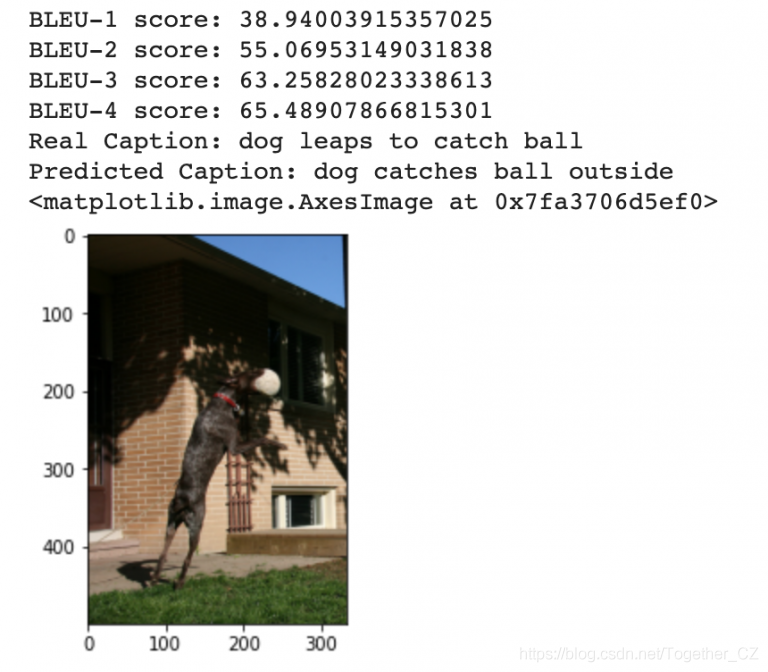
rid = np.random.randint(0, len(img_name_val))
image = img_name_val[rid]
real_caption = ' '.join([tokenizer.index_word[i] for i in cap_val[rid] if i not in [0]])
caption,result,attention_weights = evaluate(image)
first = real_caption.split(' ', 1)[1]
real_caption = first.rsplit(' ', 1)[0]
for i in caption:
if i=="<unk>":
caption.remove(i)
for i in real_caption:
if i=="<unk>":
real_caption.remove(i)
result_join = ' '.join(caption)
result_final = result_join.rsplit(' ', 1)[0]
real_appn = []
real_appn.append(real_caption.split())
reference = real_appn
candidate = caption
score = sentence_bleu(reference, candidate, weights=(1.0,0,0,0))
print(f"BLEU-1 score: {score*100}")
score = sentence_bleu(reference, candidate, weights=(0.5,0.5,0,0))
print(f"BLEU-2 score: {score*100}")
score = sentence_bleu(reference, candidate, weights=(0.3,0.3,0.3,0))
print(f"BLEU-3 score: {score*100}")
score = sentence_bleu(reference, candidate, weights=(0.25,0.25,0.25,0.25))
print(f"BLEU-4 score: {score*100}")
print ('Real Caption:', real_caption)
print ('Predicted Caption:', ' '.join(caption))
temp_image = np.array(Image.open(image))
plt.imshow(temp_image)

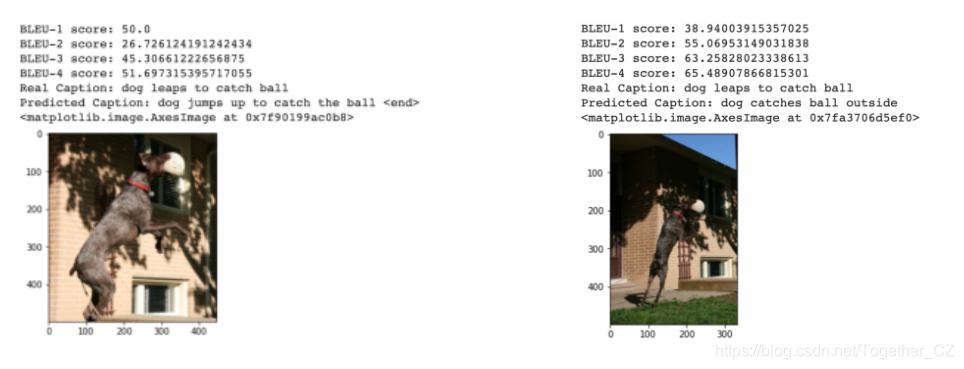

作者:沂水寒城,CSDN博客专家,个人研究方向:机器学习、深度学习、NLP、CV
Blog: http://yishuihancheng.blog.csdn.net
赞 赏 作 者
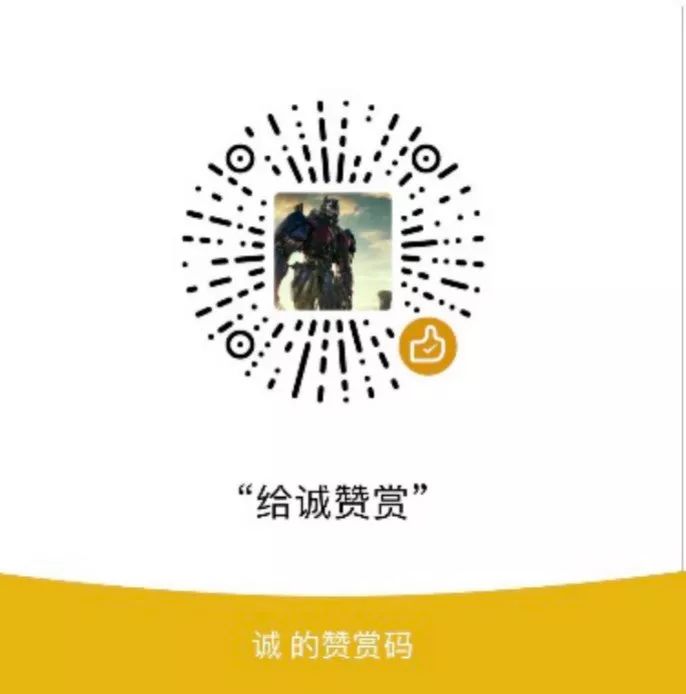
更多阅读
特别推荐
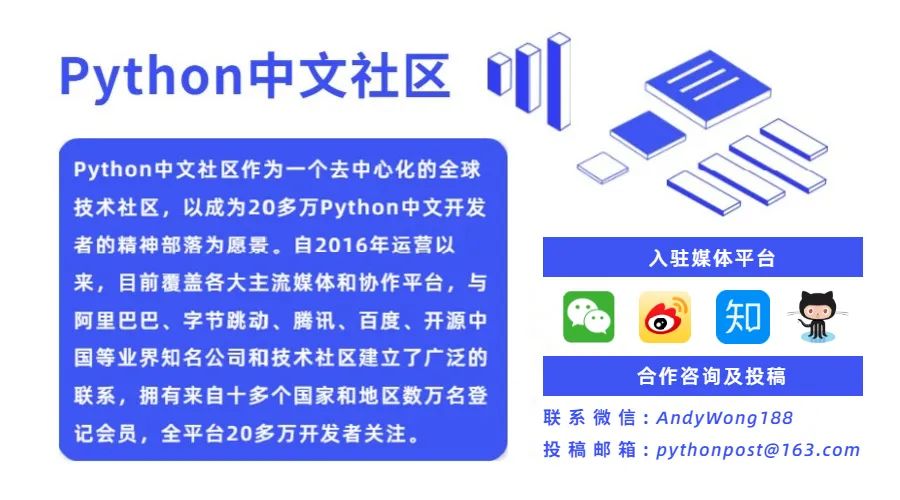
点击下方阅读原文加入社区会员
评论
